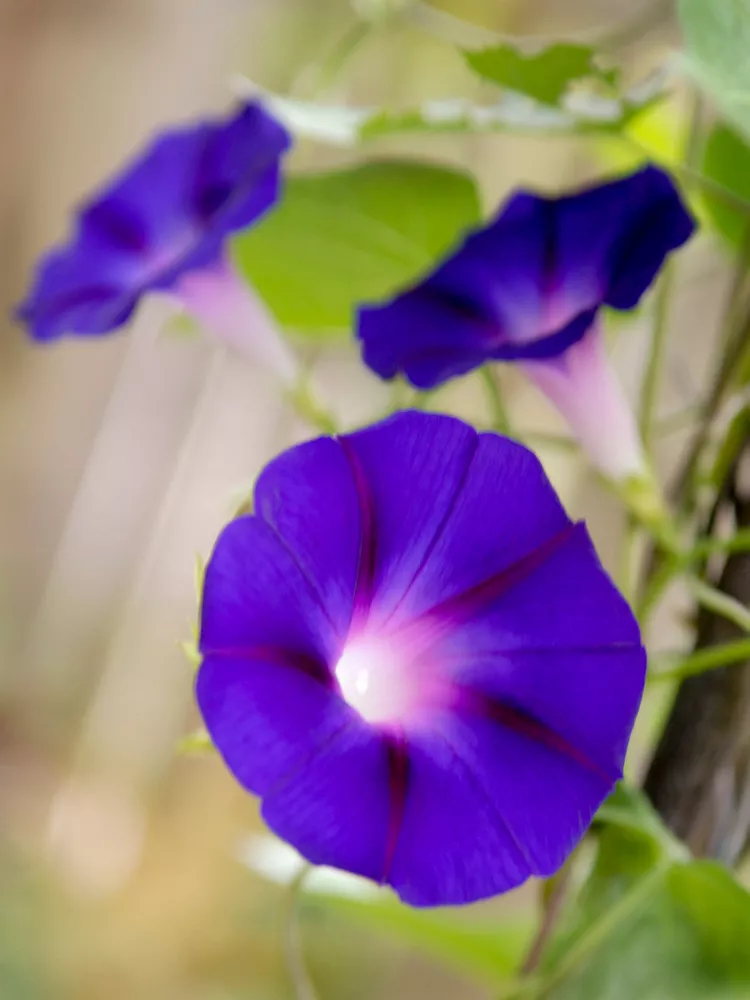Chances are you either love them or hate them, but are morning glories perennial? Whether you're hoping the answer is no so that winter will kill off these plants in your garden, or you want these plants to come back in spring, here's what you can expect from morning glories.
What Are Morning Glories?
Most morning glories grown ornamentally in gardens are annuals, but some perennial varieties exist. Hundreds of plant species in the genus Ipomoea share the common name "morning glory," which can cause a little confusion over which plant is being discussed.
The typical morning glory, Ipomoea purpurea, is the annual vine that most people grow in their gardens for their pretty purple, blue, pink, white, or bicolor flowers. While some gardeners prize the plant’s willingness to quickly cover a trellis, fence, or climb up a pole, others find it an aggressive plant that takes over and is hard to remove.
Other Types of Morning Glories
Not all morning glories are vines. In the Great Plains, the bush morning glory (Ipomoea leptophylla) is a shrubby perennial. Its pink, trumpet-shaped flowers look similar to those of other types of morning glories but its rangy stems reach about 4 feet tall. It's drought-tolerant and long-lived, growing for as long as 50 years. Bush morning glories make an excellent plant for xeriscaping to bring some pollinator-enticing plants to a dry landscape. It's also quite cold hardy, surviving winters as chilly as -25°F.
Another vining plant in the morning glory family, moonflower vines (Ipomoea alba), are night-bloomers that attract nocturnal pollinators. The large white flowers begin opening at dusk, offering a subtle scent and ethereal white glow in moonlight. The vines can reach 15 feet long, making them a beautiful evening and nighttime addition to your pergola or deck railing. It is a tender perennial in USDA Zones 10 and warmer (basically frost-free areas) but can be grown as an annual in other regions.
Several species of morning glory are listed as invasive or noxious weeds in the South, particularly Ipomoea aquatica and Ipomoea hederacea.
How to Plant Morning Glory Seeds
Morning glory seeds are covered with a hard outer coating. If you don’t help the process, the seeds may not sprout. The outer seed coat, in nature, serves as a protective layer to ensure the seeds make it through tough environmental conditions and don’t germinate too early. To help the seed to sprout, nick the seed coat with a knife or scrape an edge with a file or sandpaper. Then soak the seeds overnight in water.
Plant morning glories outside after the last frost in your area. After nicking and soaking as above, sow them ¼ inch deep in beds amended with compost. Any sunny spot with good drainage will do, but they need something to climb. Water them in after planting, and lightly–very lightly–cover with mulch like straw or pine needles. Once they pop up and begin to grow, add additional mulch to keep the soil cool and moist.
You will likely have to “introduce” your young morning glory vines to whatever support you want them to climb, directing the growing tips to the right places. But once they start twining up, they'll do the rest on their own, and won't need to be tied on to anything.
If you live in an area with a short growing season, morning glory seeds can be started indoors 4-6 weeks before your last frost to get a head start.




















